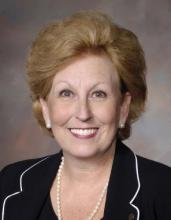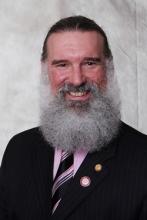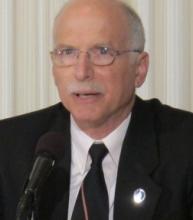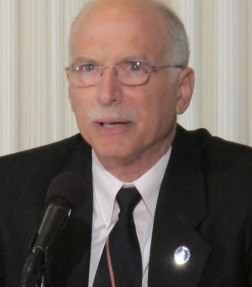User login
As the state and federal health insurance exchanges get up and running, physicians will face questions from patients about eligibility, enrollment, and how the marketplaces work.
The dizzying array of plans, costs, subsidies, and more could easily overwhelm even those who have been closely following the implementation of the Affordable Care Act, which established the exchanges.
Physicians don’t have to go it alone. Several organizations – including the American Medical Association, the American College of Physicians, and the American Academy of Family Physicians – have set up websites to help doctors help their patients through the open enrollment period (Oct. 1, 2013, to March 31, 2014).
"We’re going to give facts, figures, and information to doctors so they have it in their offices, to help them and their staff navigate this period of time," Dr. Ardis Dee Hoven, AMA president, said in an interview.
Dr. Reid Blackwelder, president of the AAFP, agreed that physicians did not have to be the only ones helping patients. Family physicians, in particular, "often feel we’re supposed to have the answer for everything, and that’s not really possible," he said in an interview.
Knowing about the exchanges, whether one agrees with the premise of the ACA or not, is important to patient care, Dr. Blackwelder said. "Even if physicians are not happy with [the law], they need to help patients recognize this is an option available to them to help them with their health care costs."
Dr. Charles Cutler, chairman of the ACP Board of Regents, said, "personally, this is a conversation I want to have with the patient." He said that a physician is most knowledgeable about that patient’s medical needs and can help guide what kind of coverage to choose.
There will be much to navigate. To a large extent, what doctors tell patients about the exchanges will depend on where they practice.
Each state has chosen its own pathway for an exchange as well as whether it will expand Medicaid eligibility, which impacts how, and how many, patients will receive coverage.
Under the ACA, Medicaid coverage is available to all Americans who earn up to 133% of the federal poverty level ($14,856 for an individual and $30,657 for a family of four). Twenty-four states have said they will make Medicaid available at that level or higher, 21 won’t expand, and 5 are uncommitted.
That means a lot of people will make too little to buy coverage on an exchange and too much to get Medicaid. According to a recent study by the Commonwealth Fund, in states that aren’t expanding, about 42% of adults who were uninsured for any time over the past 2 years won’t have access to new coverage.
At press time, 16 states and the District of Columbia had created their own exchanges, 26 states were letting the federal government run the exchange, and 7 states were operating partnership with the feds. In Utah, the state has opened an exchange for small businesses, but the federal government runs the exchange for individuals.
There are a lot of questions about how many patients will enroll through exchanges and how diligently they will stick with the new insurance plans.
*In the first week the exchanges were open, some 8 million people visited the federal exchanges' healthcare.gov website. The Department of Health and Human Services (HHS) was not able to say how many of them had actually applied for insurance coverage. The number of hits and applications on the state exchange sites varied, but in most states, the initial amount of traffic was massive.
Families USA has estimated that as many as 26 million Americans who make between 100% and 400% of the federal poverty level (between $24,000 and $94,000 for a family of four) will be eligible for tax credits to buy insurance.
Although individuals will be required to have health insurance beginning in January, some will choose not to. Those who opt out in 2014 will pay a penalty to the federal government with their 2015 tax return. The penalty will be either 1% of their income or $95, whichever is higher. By 2016, that amount rises to 2.5% of income or $695 per person, with exceptions for low-income individuals.
The government is also cutting enrollees a break on premium payments. As long as they have paid at least one premium, they’ll have a 90-day grace period to pay the next one. If they don’t pay, the insurer can drop the patient from the plan. But, if they’ve received services during that 90-day period, the insurer is not obligated to pay. That doesn't sit well with many physicians.
"It makes no sense at all – the patient is protected but the rest of the system isn’t and that’s not how it’s supposed to work," the AMA’s Dr. Hoven said.
Much remains to be seen with how the exchanges work, including what kind of clout they will have in negotiating with physicians. Many predict that the exchanges will grow as forces to be reckoned with in the insurance market.
Eventually, they will be able to set quality standards, bar plans that don’t meet certain standards, and limit the sale of insurance outside exchanges, according to Henry Aaron of the Brookings Institution and Kevin W. Lucia of Georgetown University (N. Engl. J. Med. doi:10.1056/NEJMp1308032).
Vermont and Washington, D.C., already prohibit sales of individual policies outside their exchanges.
The insurance exchanges also are expected to expand their reach. They will start offering plans to employers with 51 to 100 workers in 2016, and could be adding larger employers in 2017. Over time, "we believe that the exchanges will be seen as a means for promoting a competitive insurance market in which consumers can make rational decisions, and that they will become an instrument that can reshape the health care delivery system," wrote Mr. Aaron and Mr. Lucia.
Exchanges will vary from state to state
*The Commonwealth Fund has mapped it out, with links to each state's exchange website, details on how each exchange is governed, who serves on the board of directors, and whether and when quality data have to be reported.
*Not every insurer in every state is participating. In some states, only one insurer is offering plans. A list of every insurer and all the plans being offered in every state can be found at The Centers for Medicare and Medicaid Services website. There is also information on insurers participating in the federally-run exchanges at www.healthcare.gov.
Each state exchange is using different ways to get patients enrolled. For the most part, physicians are not being asked to get involved personally; however, the department of Health and Human Services has enlisted physician organizations – such as the AMA, the AAFP, the ACP, and the American Academy of Pediatrics – as "Champions for Coverage," to help spread the word.
Plans offered through the exchanges will have to cover a set of essential benefits. All Medicaid plans have to cover those services as well.
Exchange plans can’t deny coverage or charge higher premiums for preexisting conditions, and premiums can’t be different for men and women. Insurers can still charge more as people age, except in Vermont and New York, which prohibit age-rating by state law.
Plans will be able to offer five levels of coverage, ranging from the least protective and least expensive to the most protective and most expensive: catastrophic, bronze, silver, gold, and platinum. Not every state requires that every level of coverage be offered.
Premiums will be based on income and age. An individual with an income below $45,960 and a family of four with an income below $94,200 will be eligible for some kind of assistance. Tax credits are given directly to the insurance company so that the enrollee doesn’t have to pay the higher premium up front. Out-of-pocket costs will also be limited, depending on income.
The Kaiser Family Foundation has estimated that older Americans, those between 60-65 years, are likely to benefit the most from subsidies.
On Twitter @aliciaault
*Updated 10/9/13
As the state and federal health insurance exchanges get up and running, physicians will face questions from patients about eligibility, enrollment, and how the marketplaces work.
The dizzying array of plans, costs, subsidies, and more could easily overwhelm even those who have been closely following the implementation of the Affordable Care Act, which established the exchanges.
Physicians don’t have to go it alone. Several organizations – including the American Medical Association, the American College of Physicians, and the American Academy of Family Physicians – have set up websites to help doctors help their patients through the open enrollment period (Oct. 1, 2013, to March 31, 2014).
"We’re going to give facts, figures, and information to doctors so they have it in their offices, to help them and their staff navigate this period of time," Dr. Ardis Dee Hoven, AMA president, said in an interview.
Dr. Reid Blackwelder, president of the AAFP, agreed that physicians did not have to be the only ones helping patients. Family physicians, in particular, "often feel we’re supposed to have the answer for everything, and that’s not really possible," he said in an interview.
Knowing about the exchanges, whether one agrees with the premise of the ACA or not, is important to patient care, Dr. Blackwelder said. "Even if physicians are not happy with [the law], they need to help patients recognize this is an option available to them to help them with their health care costs."
Dr. Charles Cutler, chairman of the ACP Board of Regents, said, "personally, this is a conversation I want to have with the patient." He said that a physician is most knowledgeable about that patient’s medical needs and can help guide what kind of coverage to choose.
There will be much to navigate. To a large extent, what doctors tell patients about the exchanges will depend on where they practice.
Each state has chosen its own pathway for an exchange as well as whether it will expand Medicaid eligibility, which impacts how, and how many, patients will receive coverage.
Under the ACA, Medicaid coverage is available to all Americans who earn up to 133% of the federal poverty level ($14,856 for an individual and $30,657 for a family of four). Twenty-four states have said they will make Medicaid available at that level or higher, 21 won’t expand, and 5 are uncommitted.
That means a lot of people will make too little to buy coverage on an exchange and too much to get Medicaid. According to a recent study by the Commonwealth Fund, in states that aren’t expanding, about 42% of adults who were uninsured for any time over the past 2 years won’t have access to new coverage.
At press time, 16 states and the District of Columbia had created their own exchanges, 26 states were letting the federal government run the exchange, and 7 states were operating partnership with the feds. In Utah, the state has opened an exchange for small businesses, but the federal government runs the exchange for individuals.
There are a lot of questions about how many patients will enroll through exchanges and how diligently they will stick with the new insurance plans.
*In the first week the exchanges were open, some 8 million people visited the federal exchanges' healthcare.gov website. The Department of Health and Human Services (HHS) was not able to say how many of them had actually applied for insurance coverage. The number of hits and applications on the state exchange sites varied, but in most states, the initial amount of traffic was massive.
Families USA has estimated that as many as 26 million Americans who make between 100% and 400% of the federal poverty level (between $24,000 and $94,000 for a family of four) will be eligible for tax credits to buy insurance.
Although individuals will be required to have health insurance beginning in January, some will choose not to. Those who opt out in 2014 will pay a penalty to the federal government with their 2015 tax return. The penalty will be either 1% of their income or $95, whichever is higher. By 2016, that amount rises to 2.5% of income or $695 per person, with exceptions for low-income individuals.
The government is also cutting enrollees a break on premium payments. As long as they have paid at least one premium, they’ll have a 90-day grace period to pay the next one. If they don’t pay, the insurer can drop the patient from the plan. But, if they’ve received services during that 90-day period, the insurer is not obligated to pay. That doesn't sit well with many physicians.
"It makes no sense at all – the patient is protected but the rest of the system isn’t and that’s not how it’s supposed to work," the AMA’s Dr. Hoven said.
Much remains to be seen with how the exchanges work, including what kind of clout they will have in negotiating with physicians. Many predict that the exchanges will grow as forces to be reckoned with in the insurance market.
Eventually, they will be able to set quality standards, bar plans that don’t meet certain standards, and limit the sale of insurance outside exchanges, according to Henry Aaron of the Brookings Institution and Kevin W. Lucia of Georgetown University (N. Engl. J. Med. doi:10.1056/NEJMp1308032).
Vermont and Washington, D.C., already prohibit sales of individual policies outside their exchanges.
The insurance exchanges also are expected to expand their reach. They will start offering plans to employers with 51 to 100 workers in 2016, and could be adding larger employers in 2017. Over time, "we believe that the exchanges will be seen as a means for promoting a competitive insurance market in which consumers can make rational decisions, and that they will become an instrument that can reshape the health care delivery system," wrote Mr. Aaron and Mr. Lucia.
Exchanges will vary from state to state
*The Commonwealth Fund has mapped it out, with links to each state's exchange website, details on how each exchange is governed, who serves on the board of directors, and whether and when quality data have to be reported.
*Not every insurer in every state is participating. In some states, only one insurer is offering plans. A list of every insurer and all the plans being offered in every state can be found at The Centers for Medicare and Medicaid Services website. There is also information on insurers participating in the federally-run exchanges at www.healthcare.gov.
Each state exchange is using different ways to get patients enrolled. For the most part, physicians are not being asked to get involved personally; however, the department of Health and Human Services has enlisted physician organizations – such as the AMA, the AAFP, the ACP, and the American Academy of Pediatrics – as "Champions for Coverage," to help spread the word.
Plans offered through the exchanges will have to cover a set of essential benefits. All Medicaid plans have to cover those services as well.
Exchange plans can’t deny coverage or charge higher premiums for preexisting conditions, and premiums can’t be different for men and women. Insurers can still charge more as people age, except in Vermont and New York, which prohibit age-rating by state law.
Plans will be able to offer five levels of coverage, ranging from the least protective and least expensive to the most protective and most expensive: catastrophic, bronze, silver, gold, and platinum. Not every state requires that every level of coverage be offered.
Premiums will be based on income and age. An individual with an income below $45,960 and a family of four with an income below $94,200 will be eligible for some kind of assistance. Tax credits are given directly to the insurance company so that the enrollee doesn’t have to pay the higher premium up front. Out-of-pocket costs will also be limited, depending on income.
The Kaiser Family Foundation has estimated that older Americans, those between 60-65 years, are likely to benefit the most from subsidies.
On Twitter @aliciaault
*Updated 10/9/13
As the state and federal health insurance exchanges get up and running, physicians will face questions from patients about eligibility, enrollment, and how the marketplaces work.
The dizzying array of plans, costs, subsidies, and more could easily overwhelm even those who have been closely following the implementation of the Affordable Care Act, which established the exchanges.
Physicians don’t have to go it alone. Several organizations – including the American Medical Association, the American College of Physicians, and the American Academy of Family Physicians – have set up websites to help doctors help their patients through the open enrollment period (Oct. 1, 2013, to March 31, 2014).
"We’re going to give facts, figures, and information to doctors so they have it in their offices, to help them and their staff navigate this period of time," Dr. Ardis Dee Hoven, AMA president, said in an interview.
Dr. Reid Blackwelder, president of the AAFP, agreed that physicians did not have to be the only ones helping patients. Family physicians, in particular, "often feel we’re supposed to have the answer for everything, and that’s not really possible," he said in an interview.
Knowing about the exchanges, whether one agrees with the premise of the ACA or not, is important to patient care, Dr. Blackwelder said. "Even if physicians are not happy with [the law], they need to help patients recognize this is an option available to them to help them with their health care costs."
Dr. Charles Cutler, chairman of the ACP Board of Regents, said, "personally, this is a conversation I want to have with the patient." He said that a physician is most knowledgeable about that patient’s medical needs and can help guide what kind of coverage to choose.
There will be much to navigate. To a large extent, what doctors tell patients about the exchanges will depend on where they practice.
Each state has chosen its own pathway for an exchange as well as whether it will expand Medicaid eligibility, which impacts how, and how many, patients will receive coverage.
Under the ACA, Medicaid coverage is available to all Americans who earn up to 133% of the federal poverty level ($14,856 for an individual and $30,657 for a family of four). Twenty-four states have said they will make Medicaid available at that level or higher, 21 won’t expand, and 5 are uncommitted.
That means a lot of people will make too little to buy coverage on an exchange and too much to get Medicaid. According to a recent study by the Commonwealth Fund, in states that aren’t expanding, about 42% of adults who were uninsured for any time over the past 2 years won’t have access to new coverage.
At press time, 16 states and the District of Columbia had created their own exchanges, 26 states were letting the federal government run the exchange, and 7 states were operating partnership with the feds. In Utah, the state has opened an exchange for small businesses, but the federal government runs the exchange for individuals.
There are a lot of questions about how many patients will enroll through exchanges and how diligently they will stick with the new insurance plans.
*In the first week the exchanges were open, some 8 million people visited the federal exchanges' healthcare.gov website. The Department of Health and Human Services (HHS) was not able to say how many of them had actually applied for insurance coverage. The number of hits and applications on the state exchange sites varied, but in most states, the initial amount of traffic was massive.
Families USA has estimated that as many as 26 million Americans who make between 100% and 400% of the federal poverty level (between $24,000 and $94,000 for a family of four) will be eligible for tax credits to buy insurance.
Although individuals will be required to have health insurance beginning in January, some will choose not to. Those who opt out in 2014 will pay a penalty to the federal government with their 2015 tax return. The penalty will be either 1% of their income or $95, whichever is higher. By 2016, that amount rises to 2.5% of income or $695 per person, with exceptions for low-income individuals.
The government is also cutting enrollees a break on premium payments. As long as they have paid at least one premium, they’ll have a 90-day grace period to pay the next one. If they don’t pay, the insurer can drop the patient from the plan. But, if they’ve received services during that 90-day period, the insurer is not obligated to pay. That doesn't sit well with many physicians.
"It makes no sense at all – the patient is protected but the rest of the system isn’t and that’s not how it’s supposed to work," the AMA’s Dr. Hoven said.
Much remains to be seen with how the exchanges work, including what kind of clout they will have in negotiating with physicians. Many predict that the exchanges will grow as forces to be reckoned with in the insurance market.
Eventually, they will be able to set quality standards, bar plans that don’t meet certain standards, and limit the sale of insurance outside exchanges, according to Henry Aaron of the Brookings Institution and Kevin W. Lucia of Georgetown University (N. Engl. J. Med. doi:10.1056/NEJMp1308032).
Vermont and Washington, D.C., already prohibit sales of individual policies outside their exchanges.
The insurance exchanges also are expected to expand their reach. They will start offering plans to employers with 51 to 100 workers in 2016, and could be adding larger employers in 2017. Over time, "we believe that the exchanges will be seen as a means for promoting a competitive insurance market in which consumers can make rational decisions, and that they will become an instrument that can reshape the health care delivery system," wrote Mr. Aaron and Mr. Lucia.
Exchanges will vary from state to state
*The Commonwealth Fund has mapped it out, with links to each state's exchange website, details on how each exchange is governed, who serves on the board of directors, and whether and when quality data have to be reported.
*Not every insurer in every state is participating. In some states, only one insurer is offering plans. A list of every insurer and all the plans being offered in every state can be found at The Centers for Medicare and Medicaid Services website. There is also information on insurers participating in the federally-run exchanges at www.healthcare.gov.
Each state exchange is using different ways to get patients enrolled. For the most part, physicians are not being asked to get involved personally; however, the department of Health and Human Services has enlisted physician organizations – such as the AMA, the AAFP, the ACP, and the American Academy of Pediatrics – as "Champions for Coverage," to help spread the word.
Plans offered through the exchanges will have to cover a set of essential benefits. All Medicaid plans have to cover those services as well.
Exchange plans can’t deny coverage or charge higher premiums for preexisting conditions, and premiums can’t be different for men and women. Insurers can still charge more as people age, except in Vermont and New York, which prohibit age-rating by state law.
Plans will be able to offer five levels of coverage, ranging from the least protective and least expensive to the most protective and most expensive: catastrophic, bronze, silver, gold, and platinum. Not every state requires that every level of coverage be offered.
Premiums will be based on income and age. An individual with an income below $45,960 and a family of four with an income below $94,200 will be eligible for some kind of assistance. Tax credits are given directly to the insurance company so that the enrollee doesn’t have to pay the higher premium up front. Out-of-pocket costs will also be limited, depending on income.
The Kaiser Family Foundation has estimated that older Americans, those between 60-65 years, are likely to benefit the most from subsidies.
On Twitter @aliciaault
*Updated 10/9/13



